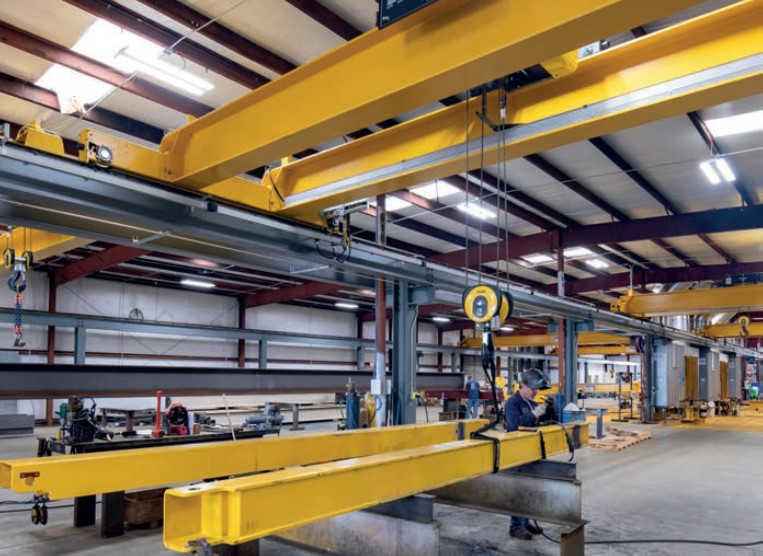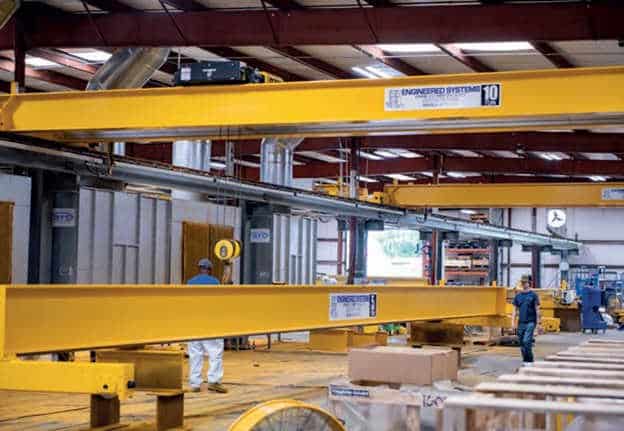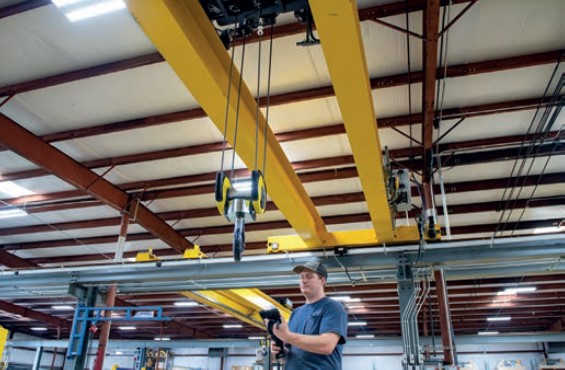The crane supplier purchased cranes from other suppliers for the construction of the factory production line, which may sound strange, but it can be explained. This typically involves a supply chain management and resource allocation strategy, where in some cases, a supplier may focus on designing, manufacturing, and selling cranes, but may not be proficient or have the resources to produce all the required cranes on their own. Therefore, purchasing cranes from other professional suppliers can be seen as a resource allocation and optimization strategy to ensure that factory construction proceeds as planned. Today, I will use a case study to analyze the forms of cooperation between crane suppliers, which can also help customers better understand the current situation of the crane industry. For a complex requirement, Dongqi Crane may not be able to provide a satisfactory response to the customer, but we can work with our partners to provide customers with more efficient and reliable crane solutions.
Crane supplier A – a full-service crane and hoist provider – looked no further than its manufacturing partner, B, when it required new lifting equipment to facilitate increased capacity for crane building at a new site located in Duncan, South Carolina.
The two new lines, which are in addition to three existing lines, are 300 feet long and will be dedicated to the manufacture of profile cranes. The crane support structure, box girder crane and V-beam will be produced at one of Crane Supplier A’s other plants.
Engineered systems need a solution that gives them the best room to grow in the industry. It is also interested in introducing state-of-the-art monitoring technology and remote connectivity to achieve the greatest return on investment possible.

They needed to modernize existing buildings on the property to meet production needs. The biggest challenge was the height of the building’s roof and the resulting headroom issues.
They have encountered very similar challenges on their past two expansions, and like anyone else installing overhead cranes, they need to consider capacity, headroom and price.
Crane Supplier A selects a crane package from Crane Supplier B. The range’s “excellent headroom” was a driving factor in selection, although hoist monitoring and remote access, among other features, were also important considerations.
Six double-girder overhead cranes with a capacity of 10 tons and spans of 48 feet are equipped with Company B’s remote monitoring system, Overhead Lifting Information (OLI), which will provide data so that predictive maintenance and on-site and remote problem diagnosis can be implemented.

Company A chose Company B’s energy chain, which eliminated the traditional energy chain and placed the rails within the bridge web, thereby increasing the headroom of the crane, giving the cranes an overall cleaner appearance, and protecting the wires from accidental contact with equipment or objects in the area.
The expansion, uplifted by its new cranes and hoists, will position Company A for continued growth, especially as dedicated crane builders will be in high demand as consolidation of the wider market is driven by investment banking groups.

Crane suppliers purchase cranes from other suppliers for factory construction, which typically involves a supply chain management and resource allocation strategy. This approach can be understood from multiple perspectives:
In summary, purchasing cranes from other suppliers for factory construction may be a comprehensive strategy based on resource allocation, cost control, time efficiency, risk management, professionalism and quality assurance, as well as supply chain integration. This approach helps to improve overall efficiency and competitiveness, while ensuring the smooth progress of factory construction.
Contact our crane specialists
Send us a message and we will get back to you as soon as possible.